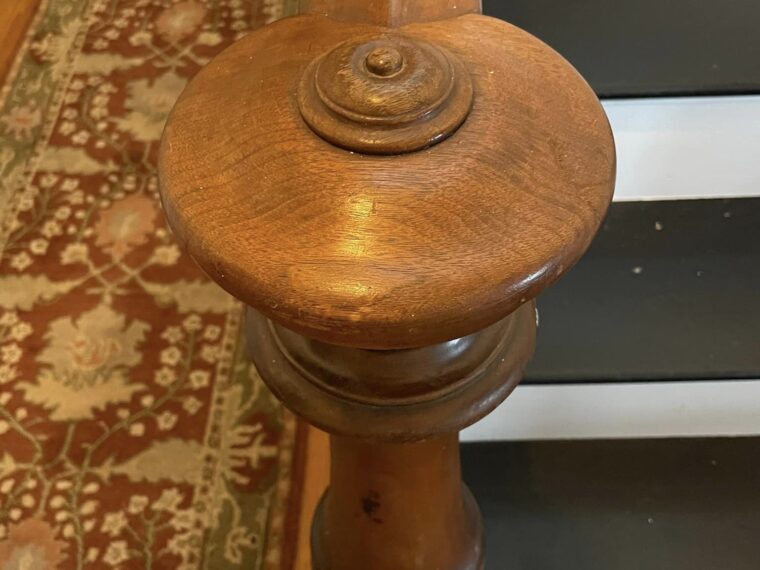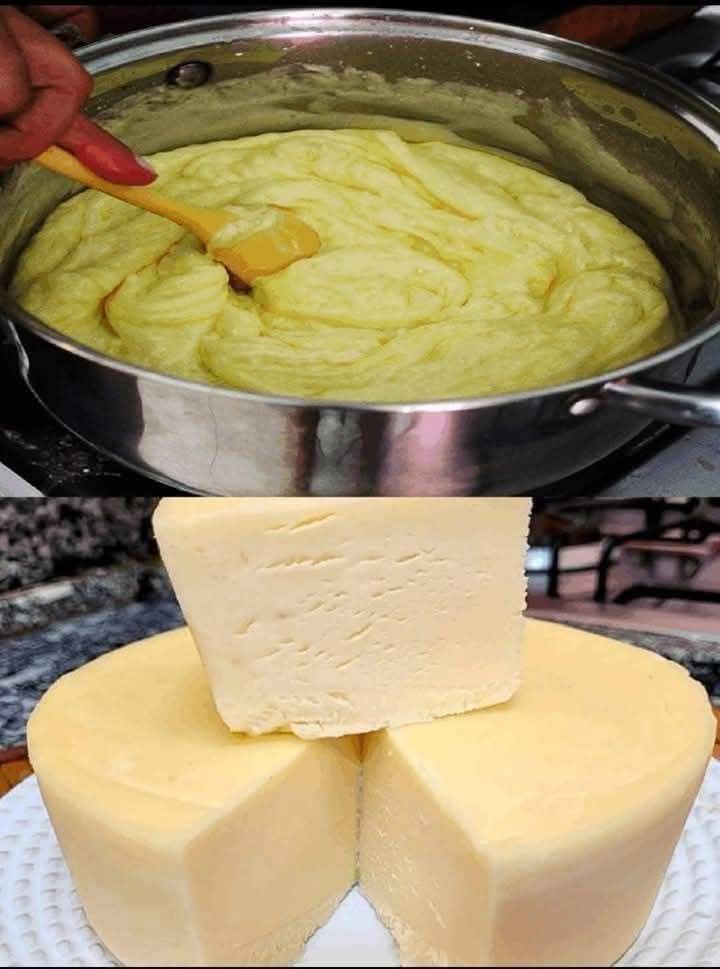You ever get that itch to prowl around your own house? Not because you lost your keys or need to find your phone, but because something just feels slightly off, like your home is hiding a secret it’s just waiting for you to discover? Maybe it’s an old farmhouse with more stories than its creaky walls will ever tell. One rainy afternoon, that feeling hit me hard. My daughter and I decided to satisfy our curiosity—and that’s when the unbelievable happened.
We live in a creaky old farmhouse built back in 1866. It’s the sort of place where the walls seem to whisper stories, floorboards groan underfoot, and every corner holds a secret waiting to be uncovered. Old houses like this have an aura of mystery, especially when a storm pounds the windows and you’re holed up inside. It’s the perfect setting for a tale about secret rooms, hidden drawers, and, of course, those puzzling newel posts that stand silently at the bottom of stairways.
The Newel Post That Wouldn’t Stay Closed
You might not know what a newel post is if you don’t spend much time in older homes or historic architecture. It’s that big, sturdy post at the foot of a staircase, often ornately carved, anchoring the banister and staircase. Sometimes, those newel posts aren’t just decorative. They can hide things—secret compartments that would make a mystery novel jealous.
On that stormy afternoon, my daughter and I started playing with the newel post. We gave it a gentle tug. To our surprise—and delight—it opened, revealing more than just a dusty hiding place. No letters, no beetle-riddled relics. Instead, there were gears. Real, mechanical gears, neatly tucked inside as if they were part of a long-forgotten machine.
Gears in a stair post? What kind of home has that? Was it part of a secret lock? A hidden mechanism? A trapdoor trigger? Our minds raced with questions. It felt like we had just stepped into the opening scene of a Victorian mystery novel, and I half-expected the wall to roll back or a secret door to creak open.
The History Behind Hidden Newel Posts
Curious, we dove into research. Turns out, secret compartments in newel posts were more common than you might think—especially in the 1800s. Back then, banks weren’t always close by, or trustworthy, and folks had to get creative about protecting their valuables. A hollow newel post was the perfect hiding spot for keys, deeds, money, or small heirlooms. These compartments provided a safe, inconspicuous place to stash prized possessions.
But what about those gears? That wasn’t just a hiding place—it was something more.
Function Meets Mystery: The Purpose of Those Gears
We found that some newel posts in Victorian-era homes were outfitted with latches connected to mechanical devices. These gears could have operated a hidden latch or lock, or even been hooked up to a service bell system that alerted servants elsewhere in the house. Homes back then weren’t just practical—they were full of ingenuity and clever features that combined function with secrecy.
Imagine a home where, with the right twist or press, a secret panel opens, or a bell rings in the kitchen, all triggered by gears tucked away in a newel post. The craftsmanship wasn’t just about beauty; it was about making the house smarter and more secure.
We haven’t yet figured out exactly what our gears operated. The mystery continues to this day. But their presence completely changed how we viewed the house. Suddenly, every nook and cranny seemed like a potential clue or hiding place. Every creak and shadow might be a whisper of the house’s secret past.
The Victorian Spirit of Craftsmanship and Curiosity
Victorian builders and craftsmen were artists and engineers. They didn’t just build houses—they created living works of art combining style, comfort, and ingenuity. Your average newel post wasn’t merely a structural piece. It was a statement—a combination of woodworking skill and inventive flair.
Those gears inside our newel post were proof that someone, many decades ago, wanted more from their home than just four sturdy walls. They wanted a little mystery, a bit of magic, and practical utility all wrapped into one.
This spirit of invention lingers in the bones of old houses, waiting for curious souls to rediscover it.
More Discoveries on the Staircase and Beyond
Our newfound fascination with hidden features transformed how we explored the house. Every renovation became an archaeological dig. We started checking every panel, knocking on walls, inspecting floorboards, and examining every odd corner of the staircase.
Over time, we found small treasures tucked away in unexpected spots—buttons from dresses long gone, a lone comb, and even what might have been a petrified jellybean. Each discovery is like a page torn from the life of the house, a glimpse into the people who lived here before us.
The Newel Post: A Portal to the Past
The post itself feels like a portal—a tangible connection to the past. It reminds us that old homes have stories layered deep beneath their surfaces. Some are hidden in walls, others secreted away in interior staircase posts like ours. And some stories are still waiting for the right person to uncover them.
There’s a thrill in knowing that these artifacts survived decades—centuries even—to spark wonder and curiosity in us today.
Why Secret Compartments in Newel Posts Were Popular
Secret compartments were practical and clever. In an age without modern safes or reliable banks, people found ingenious ways to protect their valuables right inside their homes.
- Hidden and Secure: The post’s sturdy wood and central location made it unlikely to be disturbed.
- Accessible Only to the Owner: Only those who knew the secret of the latch or mechanism could access the compartment.
- Multi-functional: Some newel posts even doubled as triggers for service bells or hidden doors, adding an extra layer of security and communication within the home.
What Could Our Gears Have Operated?
Speculation is fun, and our family has come up with a few theories about what those gears might have been connected to:
- A Secret Door or Panel: The gears could have activated a hidden door leading to a safe room or storage space.
- A Service Bell System: Perhaps the gears connected to a bell to summon help from other parts of the house.
- A Hidden Lock: Maybe the gears locked or unlocked a specific door or chest elsewhere in the home.
- An Early Security System: Could it have been an early home security device, designed to alert occupants of unwanted guests?
The truth is, the answer might be lost to time. But the mystery keeps us exploring.
The Legacy of Old Homes
Old homes are not just structures—they’re living histories. They hold memories of the people who built them, who lived and loved and struggled within their walls. Every creak and groan is a whisper from the past.
Finding the gears in our newel post didn’t just change our understanding of our house—it changed how we relate to it. It became more than a home. It became a treasure chest of stories, a puzzle to solve, and a source of endless fascination.
The Joy of Discovery
There’s something deeply satisfying about uncovering secrets hidden for over a century. It’s a reminder that history isn’t just in books—it’s in the places we inhabit.
Whether it’s a mysterious gear, a forgotten button, or a secret drawer, these discoveries connect us to those who came before and remind us that the past still lives within us.
The Adventure Continues
Our investigation is far from over. With every renovation and inspection, we find more clues, more pieces of a puzzle that spans generations.
For anyone lucky enough to own an old home, I encourage you to look closely, to listen to the creaks, and to tug gently on those newel posts. You never know what secrets you might uncover.
The magic of old houses is alive and waiting. All it takes is a little curiosity—and maybe a tug on the right post.





